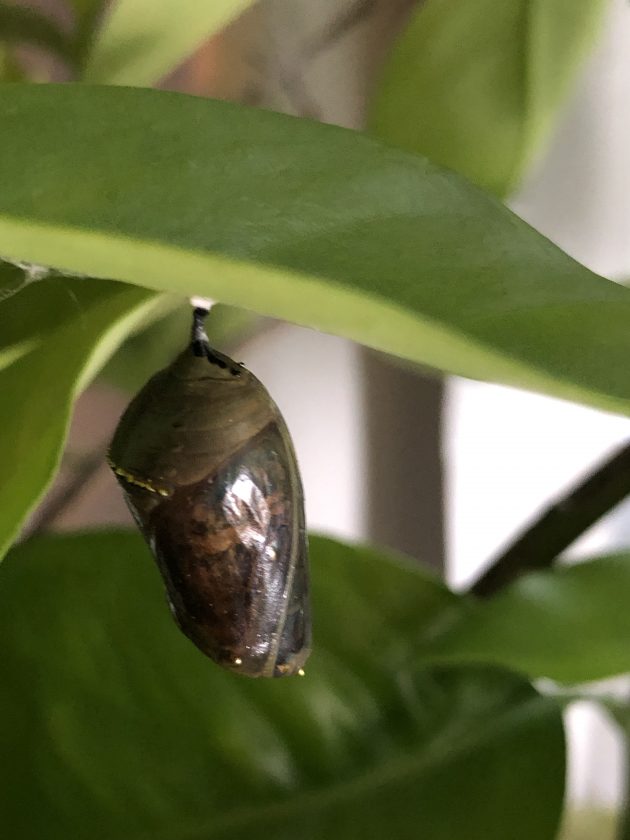Monarch’s Black Death

A few years ago, we heard the battle cry to help the monarchs, and we came running. Well, perhaps planting is a more accurate term. I’ll rephrase. We came planting!
We knew the monarchs were in trouble because either mowing or pesticides eradicated the milkweed’s natural habitat. We raised our hands and got free native pollinator-friendly seeds from ADK Action. We can provide a safe place for monarchs to come, but we can’t always protect against accidents (the one flying into my car windshield) or predators.
We did everything right. The monarchs came to their new home and have been frequent visitors since. Milkweed is holding up to its name and grows like a weed. That stuff is prolific. It wants to survive. I understand. It has monarchs to nurture. (If you need any milkweed pods, let me know.)
As if monarchs don’t have enough to worry about, they have to fight predators. These other predators aren’t just in the form of roadside mowers or chemicals. Some of these predators are wasps, Tachinid flies, parasites, and molds. Good grief. Monarchs are fragile.
The red-eyed Tachinid flies lay eggs on the caterpillar, and the larva starts feeding on the inside. Yes, I know–horror movie stuff. When the caterpillar goes into its pupae stage, the larvae will eat the monarch from the inside out. Now I have to fight off predators, too?
I didn’t realize that only one out of ten monarch eggs will survive in a healthy, well-balanced monarch world. Those are not great odds. I was so excited to see a few chrysalises on various outside plants. It wasn’t until I brought a potted plant inside that I noticed an unusual chrysalis. It was brown and foggy. It wasn’t a vibrant green or transparent. I reached out to friends who informed me that the monarch was most likely not viable. I needed to dispose of it properly so I didn’t infect any future monarchs.
Since the plant is inside, I can play more of a waiting game. After a few weeks and no change to its color, I’ve taken it off the leaf and put the whole thing in my freezer. I will dissect it later because I want to find out what beast killed my monarch. It will then get a long alcohol bath to disinfect any remains.
Next year I will have to try to take precautions and do more research. For now, I can make sure the infected ones don’t produce another generation to prey on my monarchs. I’ll have a formal burial later. If you find a brown monarch chrysalis, please seek advice before destroying. Thank you!




